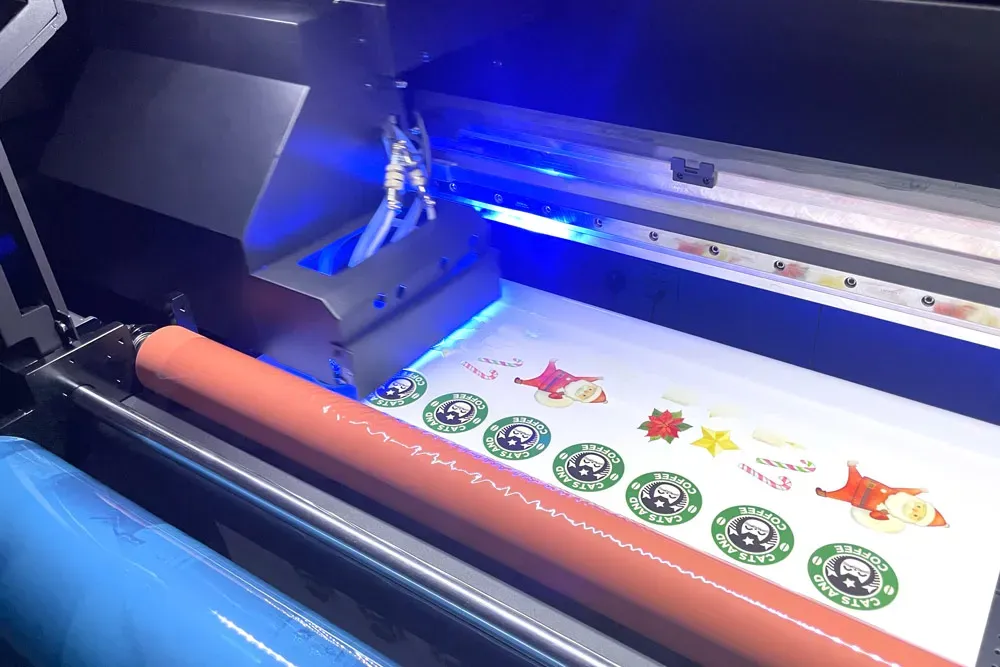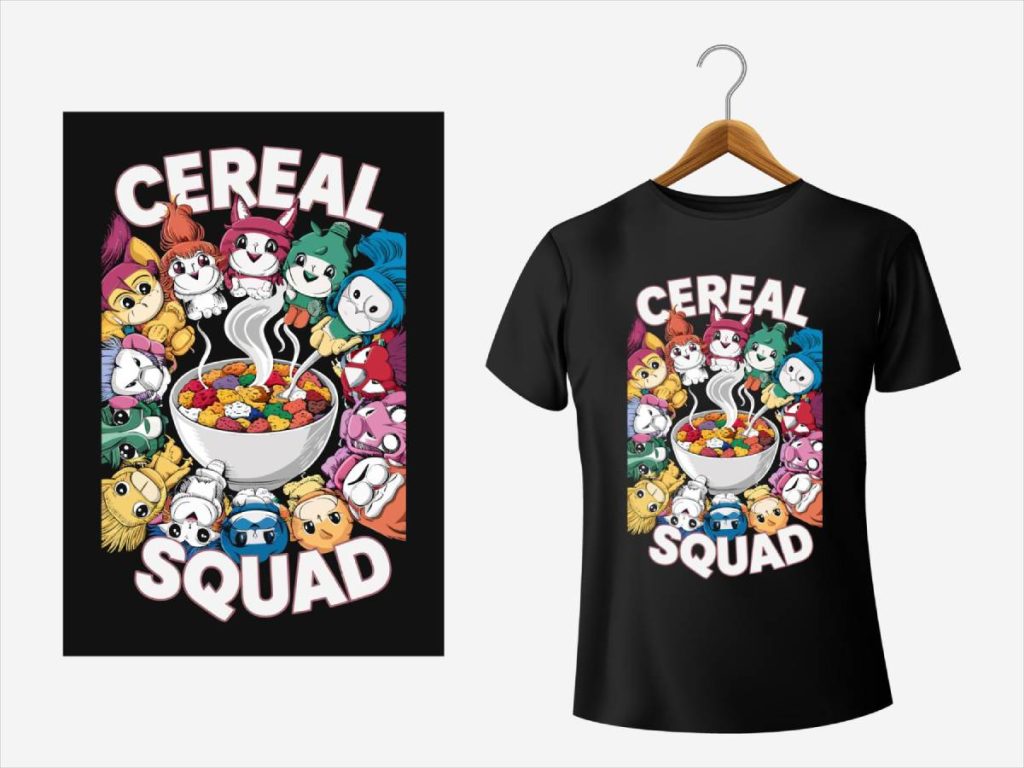In the dynamic world of graphic design, **UV DTF printing** emerges as a revolutionary technology combining the benefits of Direct-to-Film and ultraviolet (UV) printing. This cutting-edge printing method enables artists and businesses to produce striking visuals with remarkable precision on a variety of substrates, including textiles, wood, and metal. By leveraging advanced UV curing techniques, UV DTF printing creates vibrant designs that stand out, catering to the increasing demands for customization in digital printing. As we delve deeper into the realm of UV printing, we’ll explore its advantages, wide-ranging applications, and why it’s becoming a preferred choice in today’s printing technology landscape. Join us on this journey to discover how UV DTF printing can elevate your creative projects and set them apart in an ever-competitive industry.
Often referred to as Direct-to-Film UV printing, this innovative method utilizes specialized film and UV inks to create high-quality prints that resonate with various industries. This advanced printing technology offers unparalleled versatility, allowing seamless decoration on a vast array of surfaces, regardless of shape and texture. As digital printing evolves, the focus on incorporating robust techniques like UV printing has become apparent, ensuring that artists and brands can maintain a competitive edge. By understanding the mechanics of this hybrid system, users can appreciate its potential in delivering unique graphics that captivate audiences. Furthermore, the rise of UV DTF printing signifies a vital trend in graphic design, blending artistry with the efficiency of modern printing methods.
Understanding the Basics of UV DTF Printing
UV DTF printing is an innovative hybrid technique that synthesizes the reliability of traditional Direct-to-Film printing with the cutting-edge advantages of ultraviolet curing technology. This method utilizes specialized UV-curable inks that deliver exceptional vibrancy and clarity on a range of substrates. The process involves printing designs on a particular film, which are subsequently cured by UV light, resulting in durable, high-quality graphics that resist fading over time. Unlike conventional printing methods, UV DTF eliminates the need for pre-treatment of surfaces, making it suitable for a wider variety of materials, including metals, plastics, and textiles.
The appeal of UV DTF printing lies not just in its technological prowess but also in its artistic potential. Artists and graphic designers are increasingly turning to this medium for its versatility and quality. From intricate patterns on apparel to striking visuals on promotional materials, UV DTF printing enables creators to push the boundaries of their designs while ensuring superior color accuracy and detail retention. This versatility makes it a favorite among businesses across various sectors, including fashion, advertising, and event planning.
The Environmental Benefits of UV DTF Printing
One of the most compelling advantages of UV DTF printing is its commitment to sustainability. As companies strive to minimize their environmental footprint, this printing method stands out for its reduced chemical use compared to conventional techniques. UV inks are largely free of VOCs (volatile organic compounds), which helps in creating safer work environments and leads to less pollution. This eco-friendly approach not only attracts environmentally conscious businesses but also aligns with global trends towards more sustainable practices in the printing industry.
Moreover, the process of UV DTF printing generates minimal waste, unused inks can often be reclaimed and reused, which further contributes to resource conservation. The durability of the prints ensures that products have a longer life cycle and can withstand various environmental conditions, significantly reducing the need for replacements. By adopting UV DTF technology, companies can not only enhance their product offerings but also demonstrate a commitment to environmental stewardship, appealing to a growing market of socially responsible consumers.
Creative Uses for UV DTF Printing in Graphic Design
The scope of UV DTF printing in graphic design is vast, allowing artists to explore new creative avenues. Custom merchandise is one of the most popular applications, where designers can utilize this technology to create personalized apparel that resonates with their audience. From unique T-shirt designs to custom tote bags, UV DTF makes it possible to print intricate patterns and vibrant graphics that can be produced in small batches or for specific events, such as weddings or corporate functions.
Additionally, UV DTF printing is ideal for producing high-quality event graphics. The precision of the printing process ensures that signage, banners, and promotional displays are eye-catching and durable, making a lasting impression on attendees. Artists and designers also leverage this technology for trial runs of new artwork, as the process is not only cost-effective but also allows for immediate feedback on color and design accuracy before committing to larger print runs.
Market Trends Influencing UV DTF Printing
The UV printing sector is rapidly evolving, driven by several key market trends that indicate a bright future for UV DTF printing. The surge in the popularity of compact and user-friendly printers is noteworthy, as these innovations cater especially to small businesses and startups. This wider accessibility means that a new generation of creatives can leverage UV DTF technology without the high barriers of entry associated with traditional printing equipment, thus democratizing the art of graphic design.
Moreover, advancements in ink formulations and printer efficiency are streamlining production processes. Enhanced ink characteristics lead to better adhesion and a broader color spectrum, while faster printing speeds enable businesses to meet escalating demands for customized products. As this technology continues to grow, businesses implementing UV DTF will likely find themselves at the forefront of a competitive marketplace, driving innovation and creative excellence.
Challenges Facing the Adoption of UV DTF Printing
While UV DTF printing presents numerous advantages, potential users should also be aware of the challenges involved in its adoption. The initial investment required for UV DTF equipment can be significant, posing a barrier for smaller businesses or startups with constrained budgets. Training staff to operate this sophisticated equipment can also add to the costs and requires careful planning to ensure a smooth transition into using this technology.
Moreover, maintaining a UV DTF printer necessitates regular upkeep and calibration to ensure optimal performance. Neglecting maintenance can lead to downtimes or quality issues, which can ultimately affect a business’s reputation and bottom line. Therefore, organizations considering this printing method need not only to calculate the initial costs but also to factor in ongoing maintenance and potential training resources to maximize their investment.
The Future of UV DTF Printing in Graphic Design
The future of UV DTF printing in graphic design is undeniably promising. As technologies evolve and refine, the application possibilities will expand, pushing the creative boundaries for designers across industries. The integration of software innovations and automation in the printing process will allow for even higher precision and efficiency, making it easier for artists and businesses to produce detailed designs quickly and reliably.
Furthermore, as consumers continue to demand uniqueness in products, the adaptability of UV DTF printing offers a valuable solution. The ability to personalize and customize designs on a wide array of materials will likely become more essential in the market, driving further adoption of UV DTF technology. With ongoing advancements and growing interest, those involved will be well-positioned to explore new frontiers in graphic design, ensuring their offerings remain relevant and impactful.
Frequently Asked Questions
What is UV DTF printing and how does it work?
UV DTF printing combines Direct-to-Film (DTF) printing techniques with ultraviolet (UV) curing technology. This innovative process involves printing vibrant designs onto a specialized film using UV-curable inks, which cure instantly under UV light. This allows for high-quality graphics on a wide range of materials, making it a versatile choice for various applications.
What are the advantages of using UV DTF printing over traditional printing methods?
UV DTF printing offers several advantages, including versatility in printing on various substrates without pre-treatment, high-quality finishes with vibrant colors, and increased sustainability due to minimal waste and reduced chemical use. These benefits make it an appealing option in the landscape of digital printing.
Can I use UV DTF printing for custom merchandise?
Yes, UV DTF printing is ideal for creating custom merchandise such as unique apparel, promotional items, and personalized products. Its ability to print high-resolution designs on an array of materials allows artists and businesses to produce bespoke items that stand out in the market.
What types of materials can be printed using UV DTF printing technology?
UV DTF printing technology allows for printing on a variety of materials, including textiles, wood, metal, and plastics. This wide substrate compatibility makes it a preferred choice for graphic designers looking to create diverse products.
How does UV DTF printing contribute to sustainability in the printing industry?
UV DTF printing contributes to sustainability by producing less waste and utilizing fewer harmful chemicals compared to traditional printing methods. This eco-friendly approach is increasingly important for businesses that prioritize environmentally responsible practices.
What challenges might I face when starting with UV DTF printing?
While UV DTF printing offers many benefits, challenges include the initial investment for purchasing UV DTF printers and the necessary training, as well as ongoing maintenance to ensure optimal performance. Understanding these aspects is essential for newcomers to this innovative printing technology.
| Key Points | Details |
|---|---|
| Introduction | UV DTF printing combines DTF technology with UV curing, allowing for high-quality graphics on various materials. |
| Technology | Utilizes wide substrate compatibility and specialized films with UV-curable inks for vibrant designs. |
| Advantages | Includes versatility for different materials, sustainability through reduced waste, and high-quality finishes. |
| Industry Trends | Growth in compact printers and innovations in speed and ink formulations enhancing efficiency. |
| Creative Applications | Used in custom merchandise, event graphics, and unique artworks, emphasizing customization. |
| Challenges | Includes initial costs and regular maintenance requirements affecting new users. |
Summary
UV DTF printing is redefining the graphic design industry by offering an innovative printing method that combines the best of Direct-to-Film technology and UV curing. With its ability to create stunning visuals on an array of materials—from textiles to metals—UV DTF printing caters to the diverse needs of creators and businesses alike. This cutting-edge technology not only enables high-quality output with vibrant colors and remarkable durability but also supports sustainability through its lower environmental impact compared to traditional methods. As the popularity of UV DTF printing continues to grow, it presents exciting opportunities for artists and entrepreneurs, allowing them to push the boundaries of creativity while meeting market demands.



